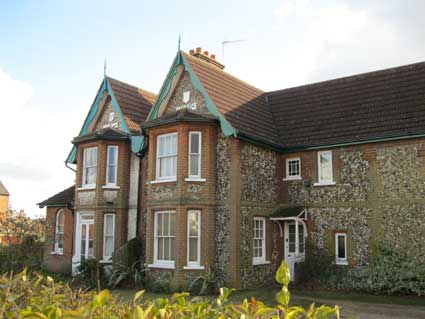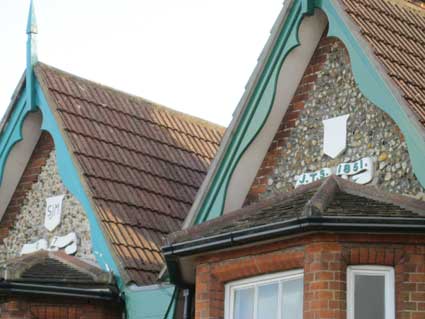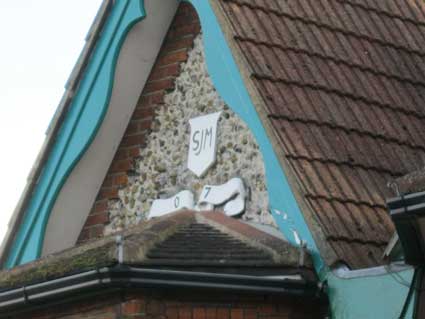'SJM
[on the
shield]
0 ... 7
[on
the scroll beneath]'
It is tempting to think
that when the name
of the house changed, the left gable was built as an addition to the
house. The initials could be those of the builder, or the new owner and
it is interesting that only two numerals are use to convey '1907' given
the size of the scrolls.


